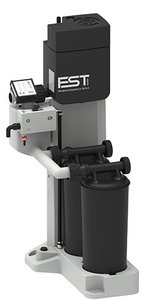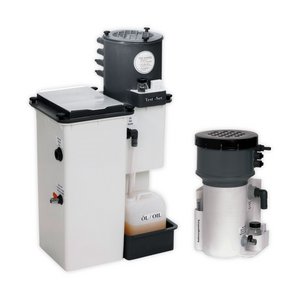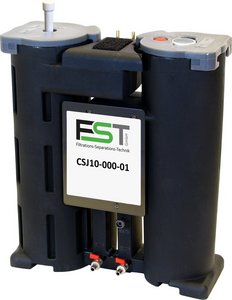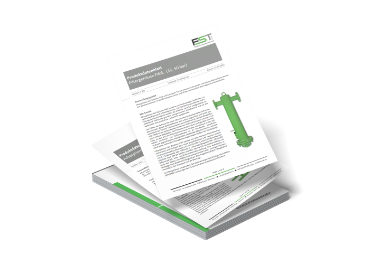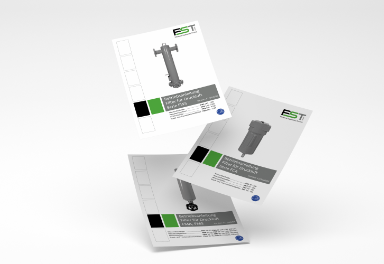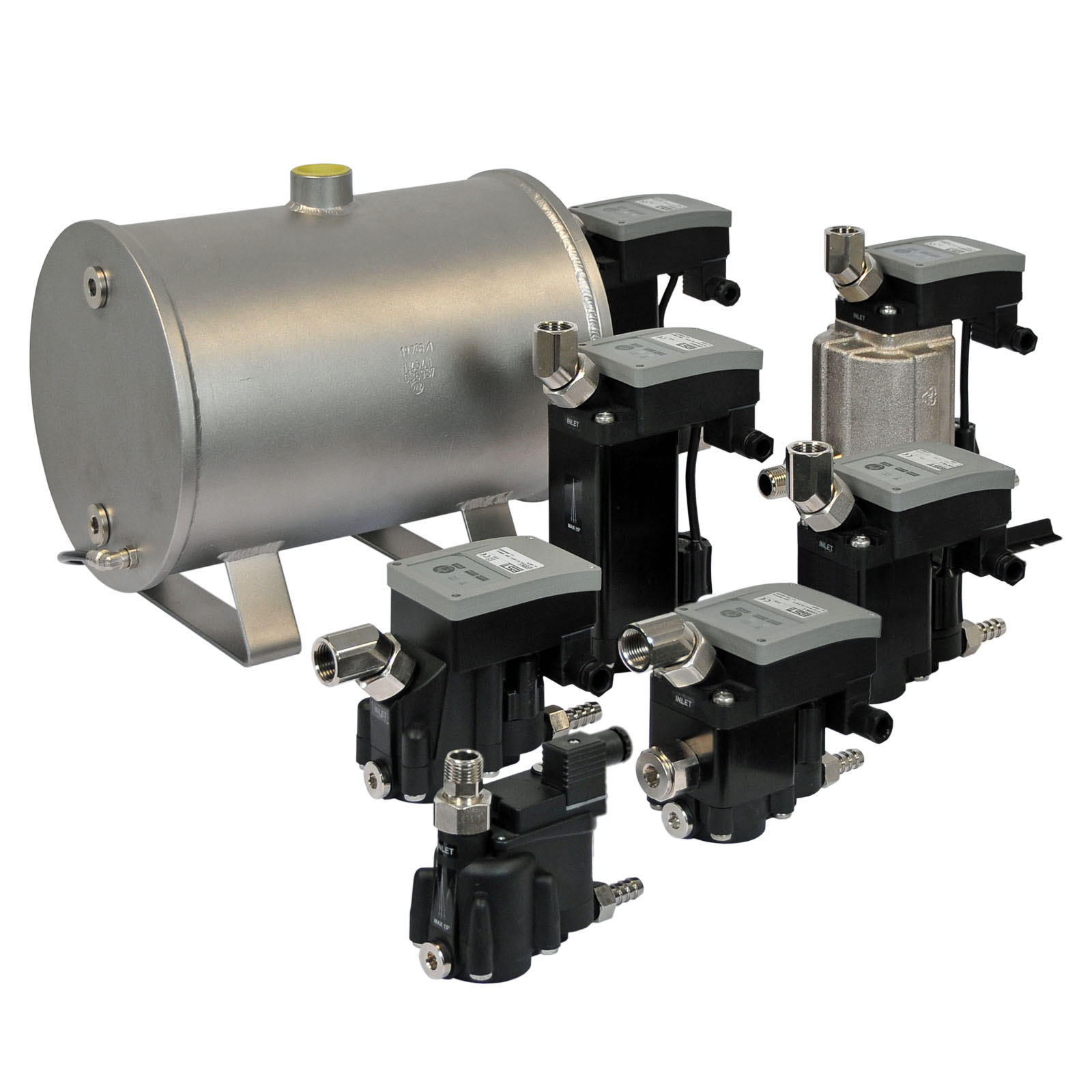Oil-water-separators – Economical & environmentally friendly
Compressed air condensate mostly consists of water. However, compressing air introduces considerable amounts of impurities and hydrocarbons. To avoid disposing it as hazardous waste – which is expensive – treatment with specialised oil-water-separators offers a cost-efficient solution.
FST’s oil-water-separators reliably separate oil and particles from the water. The result is pure condensate water that conforms to the regulations of the German federal water act. It can be disposed of in wastewater without any concern.
Our products
FST’s high quality oil-water-separators are available in three different product series called CSQ, CSJ and CSW.
Does your company require higher volume flows, different voltages or operating pressures? Separable, emulsified condensate requires a special design of the oil-water-separator or the use of emulsion separation systems.
Oil-water-separators – Function & Structure
Oil-water-separators reduce the condensate’s contamination to specific thresholds. They commonly employ a two-container principle. In those containers, the condensate and oil are separated and treated in multiple stages.
Separating oil from water does not require energy: Purely mechanically the condensate flows through singular containers of different height. Highly modern oil-water-separators, such as FST’s CSJ series, have the same functionality. However, all chambers are combined into a single, compact unit.
![[Translate to English:] Öl-Wasser-Trenner Funktionsweise [Translate to English:] Flussdiagramm veranschaulicht Aufbau und Funktionsweise des Öl-Wasser-Trenners CSW der Firma FST](/fileadmin/_processed_/b/e/csm_oel-wasser-trenner-funktionsweise_f1925c4169.jpg)
Venting chamber with condensate inlet
In the first step, the condensate is fed into the venting chamber of the oil-water separator, possibly having a small residual pressure. There, the pressure is eventually reduced to atmospheric levels. An activated carbon filter rids the venting expansion air of any smell.
Sedimentation stage with oil outlet
Condensate “rests“ in the sedimentation stage. Heavier contaminants sink to the bottom while big oil droplets rise to the top. The latter form an oil layer on the water surface. This oil then leaves the oil-water-separator flowing out of the oil outlet.
Oil storage filter
Subsequently, the oil storage filter removes small, non-floating oil droplets from the condensate. The storage filter consists of a fine knitted fabric of oil-attracting (oleophilic) material. Small droplets of oil adhere to its surface and are then stored in the filter and filtered out of the water.
Activated carbon adsorption with water outlet
Finally, an activated carbon filter removes dissolved residual hydrocarbons from the condensate. Filtration with activated carbon finally completes the condensate treatment process.
The end product "dischargeable" water then drains out of the oil-water separator via a water outlet. It can now be discharged into the sewers or other bodies of water without worry. Using a test valve, trained personnel can take a condensate sample from the activated carbon filter. This way it is possible to determine the saturation – and thus if a filter change is due.
Frequently asked questions about oil-water separators
News from FST: Our Newsletter
Sign up now and stay up to date. In the FST newsletter we inform you about new products, training courses, events and more.
NEED MORE INFORMATION? TAKE A LOOK!
Contact the best person
Or use our search function to find the right expert for your country. We are happy to help.


